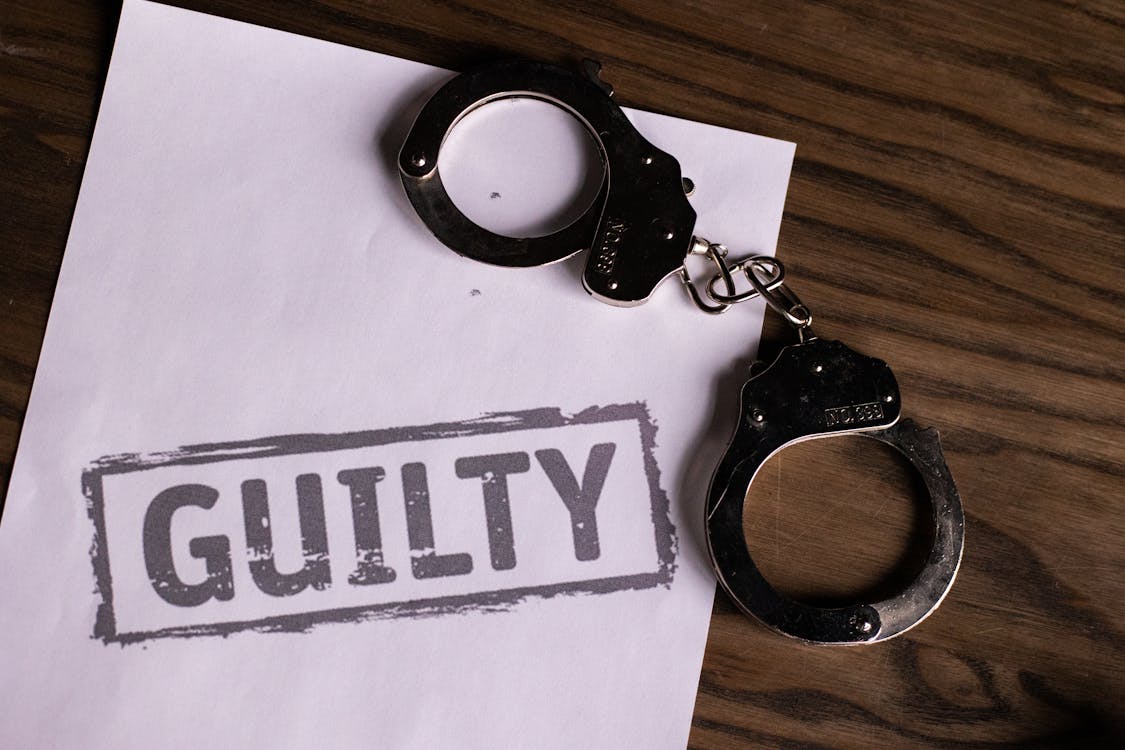With the AI Voice Generator Market likely to reach a value of $20.4 billion by 2030, the escalation of deepfake technology and audio manipulation is no surprise. Thus, forensic audio authentication has become a crucial tool for modern investigators.
According to the National Institute of Standards and Technology (NIST), advancements in artificial intelligence have made audio forgeries more convincing than ever, posing significant risks in legal proceedings and criminal investigations.
Digital forensic experts use cutting-edge techniques such as spectrographic analysis, waveform comparison, and electronic signature verification to determine the authenticity of an audio recording.
With the right tools and expertise, forensic investigators can uncover tampered recordings, ensuring that truth prevails in courtrooms, security investigations, and media verification processes.
1. The Importance of Forensic Audio Authentication
Audio recordings are often presented as evidence in criminal trials, civil disputes, and corporate investigations. However, with modern editing software, malicious actors can manipulate recordings to mislead courts and authorities. Forensic audio authentication ensures that recordings are genuine, preventing wrongful accusations and protecting the integrity of evidence.

2. Key Elements of Audio Authentication
Authentication involves determining whether an audio file has been altered, identifying inconsistencies, and verifying its originality. Experts analyze the following elements:
Metadata: Information about the file’s creation, modification, and format.
Acoustic properties: Examining waveform consistency, background noise, and voice characteristics.
Digital signatures: Checking for embedded markers or cryptographic hashes that validate originality.
3. Spectral and Waveform Analysis
One of the most common techniques in audio forensic analysis is spectral and waveform analysis. Using advanced software, investigators can visualize an audio file’s frequency spectrum to detect anomalies.
Spectrogram Analysis: Helps identify frequency inconsistencies that indicate splicing or tampering.
Waveform Analysis: Examines amplitude and patterns for unnatural breaks or edits.
4. Electrical Network Frequency (ENF) Analysis
ENF analysis is a powerful forensic tool used for audio authentication. This technique relies on the variations in electrical power frequency (50Hz or 60Hz) recorded in the background of an audio file.
- If the ENF pattern matches the expected grid frequency at the time of recording, the audio is likely authentic.
- Deviations or irregularities suggest manipulation or synthetic generation.

5. Voice Biometrics and Speaker Identification
Digital forensic experts use voice biometrics to analyze speaker characteristics and verify authenticity. This technique involves:
Formant Analysis: Evaluates vocal tract resonance and speech patterns.
Pitch and Intonation Analysis: Identifies unnatural modulations that indicate splicing.
AI-Based Speaker Recognition: Uses machine learning to compare voiceprints against known samples.
6. Background Noise Analysis
Every audio recording contains background noise that can serve as a fingerprint for audio authentication. Experts analyze:
Ambient Sounds: Traffic, birds, or machinery can indicate the recording’s environment.
Room Tone Matching: Ensures consistency in background noise across the entire file.
Noise Print Analysis: Detects artificial insertions or deletions.
7. Deepfake and Synthetic Audio Detection
With the rise of AI-generated voices, digital forensic experts now use specialized tools to detect synthetic audio. Techniques include:
Neural Network Analysis: Identifies artifacts associated with AI-generated speech.
Prosody and Speech Rhythm Evaluation: Detects unnatural timing and pronunciation.
Adversarial Testing: Challenges AI-created audio with detection algorithms.
8. Audio File Metadata Examination
Metadata is essential for verifying an audio file’s origin and integrity. Experts inspect:
Creation and Modification Dates: Identifies inconsistencies.
Device Information: Checks if the recording device matches the expected source.
Compression and Encoding Details: Detects recompression artifacts indicative of edits.

9. Tampering Detection through Signal Analysis
Signal analysis techniques help detect subtle manipulations. Methods include:
Phase Analysis: Identifies shifts that suggest inserted segments.
Harmonic Distortion Detection: Finds anomalies in the harmonic structure.
Time-Domain Examination: Locates abrupt changes in signal continuity.
10. Forensic Audio Authentication Tools
Several industry-leading tools assist digital forensic experts in analyzing audio files. Some of the most widely used include:
Forensic Audio Workstation (FAW): Provides a comprehensive suite for waveform and spectral analysis.
iZotope RX: Advanced noise reduction and spectral editing capabilities.
Audacity (for initial inspection): Open-source tool used for basic waveform visualization.
Sonus Investigate: AI-powered deepfake detection and voice analysis.
Cognitech Audio Examiner: Specialized for voice authentication and noise filtering.
11. Challenges in Audio Authentication
Despite technological advancements, forensic audio authentication presents challenges:
High-Quality Editing Tools: Modern software allows for nearly undetectable modifications.
Encryption and Compression Artifacts: Some files lose critical data due to compression.
Legal Admissibility: Courts require rigorous validation to accept audio evidence.
12. Legal and Ethical Considerations in Audio Authentication
Forensic audio authentication isn’t just about technical analysis—it also involves legal and ethical considerations. Digital forensic experts must ensure that their methods comply with legal standards and that evidence is collected and analyzed without violating privacy laws. Key considerations include:
Chain of Custody: Ensuring proper documentation of audio evidence from collection to courtroom presentation.
Privacy Laws: Complying with regulations regarding recorded conversations, such as consent requirements.
Expert Testimony: Providing clear and admissible findings in court.
13. The Role of Machine Learning in Audio Forensics
Machine learning is revolutionizing forensic audio authentication by automating analysis and improving detection accuracy. Some applications include:
Pattern Recognition: Identifies subtle anomalies that indicate tampering.
Deep Learning Models: Trained to detect synthetic voices and audio deepfakes.
Automated Report Generation: Reduces manual workload by providing instant analysis summaries.
14. Enhancing Quality for Better Audio Authentication
Before authentication can be performed, digital forensic experts often enhance the quality of audio recordings to remove noise and clarify speech. Common enhancement techniques include:
Noise Reduction: Removing background interference to isolate speech.
Equalization and Filtering: Adjusting frequency levels to improve clarity.
Time and Speed Adjustments: Correcting distortions caused by recording equipment.
Enhancing audio quality helps digital forensic experts conduct more accurate analyses and ensures that key details are preserved during authentication.
15. Real-World Cases Involving Forensic Audio Authentication
Forensic audio authentication has played a critical role in many high-profile legal cases. Some notable examples include:
Criminal Trials: Authenticating 911 calls and covert recordings as admissible evidence.
Corporate Fraud Investigations: Verifying the legitimacy of recorded business conversations.
Political Scandals: Exposing doctored recordings used in misinformation campaigns.
These real-world cases highlight the importance of forensic audio authentication in ensuring justice and preventing manipulation of evidence.
16. The Impact of Emerging Technologies on Audio Authentication
As technology continues to evolve, new challenges and opportunities arise in forensic audio authentication. Emerging trends include:
Blockchain for Audio Verification: Securely timestamping recordings to prove authenticity.
Quantum Computing: Potentially enhancing forensic analysis with faster processing capabilities.
AI-Generated Voice Replication: Increasing the need for more advanced detection techniques.
Staying ahead of these technological advancements is crucial for forensic experts to maintain the reliability and credibility of audio evidence in investigations.

17. The Role of Multimodal Forensic Analysis
Forensic audio authentication is often combined with other forensic techniques to strengthen the reliability of evidence. Multimodal forensic analysis involves:
Audio-Video Synchronization: Ensuring that an audio recording matches its corresponding video.
Linguistic Analysis: Examining speech patterns, dialects, and language inconsistencies.
Cross-Verification with Other Evidence: Comparing audio findings with phone records, witness statements, or environmental factors.
Using a multimodal approach enhances the accuracy of forensic investigations and provides a more comprehensive analysis of audio evidence.
18. The Future of Forensic Audio Authentication
As audio editing technology evolves, so do forensic authentication methods. Emerging trends include:
AI-Powered Authentication: Machine learning models trained to detect deepfake and tampered audio.
Blockchain for Audio Integrity: Embedding blockchain hashes to prove authenticity.
Real-Time Audio Verification: Live authentication systems to prevent fraudulent recordings.
The Bottom Line
Forensic audio authentication is a vital discipline that ensures the credibility of audio evidence in legal and investigative settings. Digital forensic experts can confidently determine whether an audio recording has been tampered with by leveraging advanced techniques like spectral analysis, ENF matching, and AI-based detection.
While challenges persist, ongoing innovations in forensic technology continue to strengthen the ability to detect and prevent audio fraud. Digital forensic experts must stay ahead of emerging threats and continuously adopt the latest tools to maintain the integrity of digital evidence.
Ensure the Integrity of Your Audio Evidence with Eclipse Forensics
At Eclipse Forensics, we specialize in advanced forensic audio authentication techniques to ensure the integrity of your recordings. Whether you’re involved in a legal case, corporate investigation, or personal dispute, our cutting-edge tools and expert analysis can verify the authenticity of your audio files.
Don’t risk the reliability of your evidence—trust our digital forensic experts to identify any tampering or manipulation. Contact Eclipse Forensics today to secure your audio recordings and protect your case with trusted, expert audio forensic services. Let us help you preserve the truth.



























